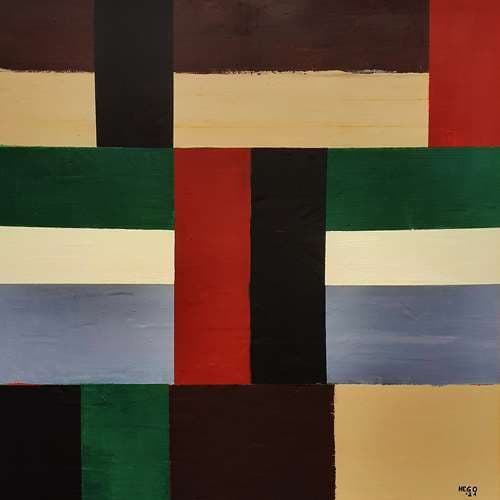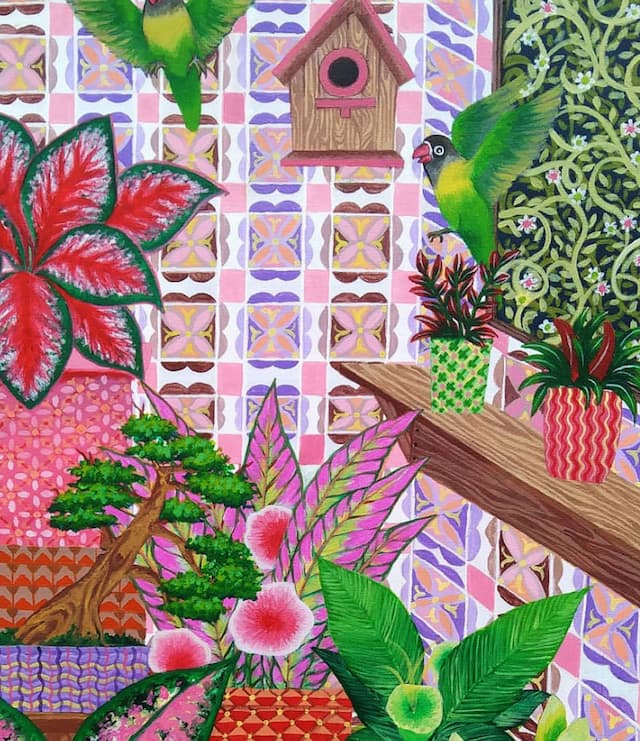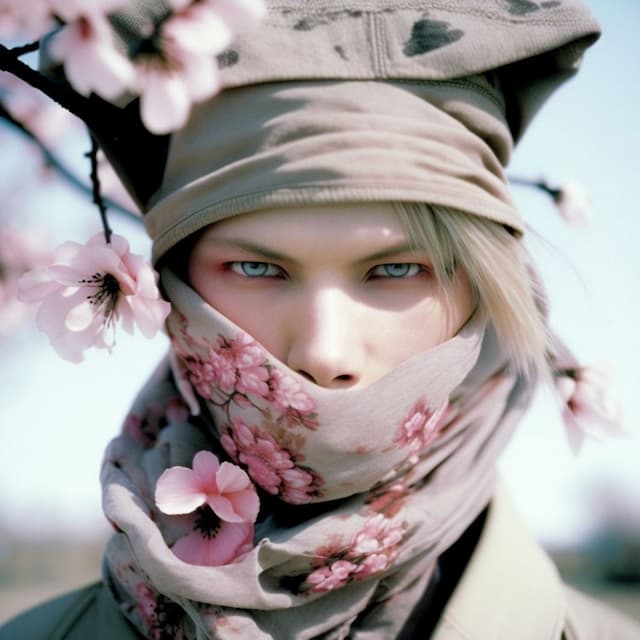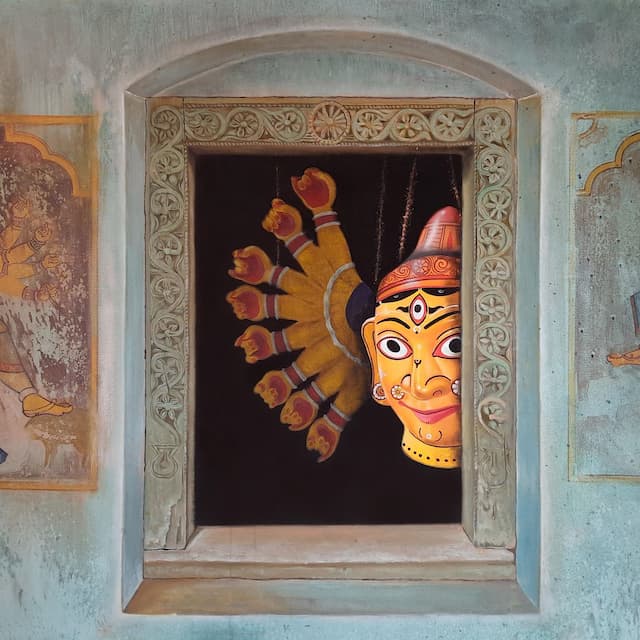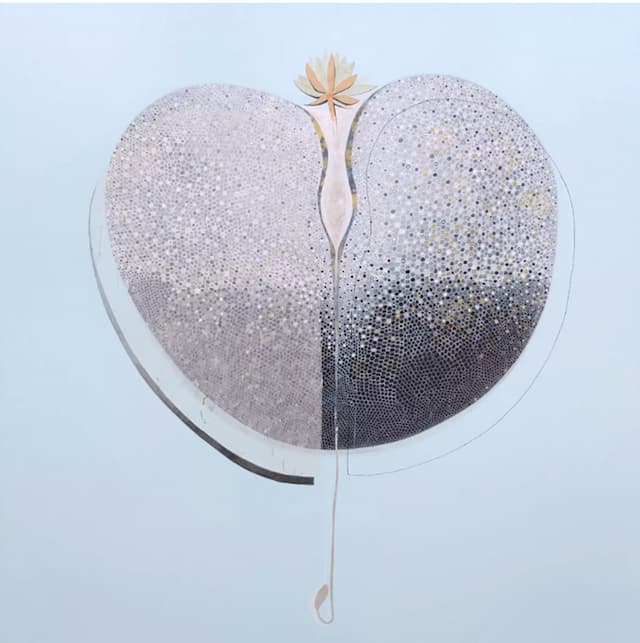Subscribe for our newsletter to have the latest stories and curated art recommendations delivered straight to your inbox
Singapore Art and Artists: Exploring the Rich Cultural Tapestry and Creative Expression
RTISTIQ TEAM
 Like
Like comments
comments SAVE
SAVESingapore is a vibrant city-state that has a thriving arts and culture scene. Over the years, Singapore has seen the emergence of numerous talented artists who have made significant contributions to the local and international art scene. In recent years, the art scene in Singapore has experienced significant growth and development, further solidifying its position as a vibrant cultural hub. Here's a glimpse into Singapore's art and artists:
Art Movements in Singapore:
Compared to European and other Asian counterparts, Art is relatively young in Singapore and driven mainly by the many cultures and traditions that make up Singapore society. What makes Singaporean Art more distinct is the merging of Chinese, Malay and European Art forms with a blend of localised cultural heritage, indigenous beliefs and popular practices in Singapore. Here is an overview of the key periods and milestones in the history of visual art in Singapore:
Early Art Influences (Pre-19th Century):
Before the 19th century, Singapore was primarily a trading port, and the cultures of the Malay Archipelago, China, India, and the West predominantly influenced art. Traditional art forms, such as batik, sculpture, and calligraphy, were practised by local artisans.
Colonial Influence (19th-early 20th century):
The arrival of British colonial rule in the 19th century brought Western influences to Singapore. European artists and art teachers introduced academic art practices, such as oil painting and portraiture, to local students. Notable artists during this period include Raffles Institution founder Sir Thomas Stamford Raffles and his wife, Sophia Raffles.
Nanyang Style and Cultural Identity (mid-20th century):
In the 1950s, a significant art movement known as the Nanyang Style emerged in Singapore. Led by four master artists of the time, Liu Kang, Chen Wen Hsi, Georgette Chen and Cheong Soo Pieng, this movement combined Chinese ink painting techniques with Western art styles, creating a distinctive fusion. The Nanyang Style was a form of cultural expression exploring the identity of the Southeast Asian region and its people.
Modern Art Society (mid-20th century):
In the 1960s, the Modern Art Society was established, advocating for modern art practices and promoting local artists. This period marked a shift towards experimentation and exploring abstract and conceptual art forms. Artists like Lim Yew Kuan and Anthony Poon were instrumental in driving the development of modern art in Singapore.
Contemporary Art and Global Recognition (late 20th century-present):
In the late 20th century, Singapore's art scene continued to evolve and embrace contemporary art practices. The opening of institutions like the Singapore Art Museum (SAM) in 1996 and the National Gallery Singapore in 2015 provided platforms for local and international contemporary artists. Singapore's participation in international art events, such as the Venice Biennale and the Singapore Biennale, further propelled its global recognition.
Most Notable Artists of Singapore
Singapore has been home to many prominent Artists continuously gaining International reputations. Here are some of the most notable and significant artists from the city-state of Singapore
Georgette Chen (1906-1993) was a Chinese-born Singaporean painter known for her realistic portraits and landscapes. She is considered one of the pioneers of modern art in Singapore and a key figure of the "Nanyang School" of Art. She had spent much of her early life in China, France and New York, before making Singapore her home in the year 1954 to spend later years of her life.
GEORGETTE CHEN, BOATS AND SHOPHOUSES , (credit: Sotheby's)
Chen Wen Hsi (1906-1991) was a Chinese-born Singaporean painter known for his lyrical landscapes and portraits. Similar to other prominent artists Chen Wen Hsi, had spent a good part of his life in China before making Singapore his permanent home. He along with four other prominent artists founded the Nanyang Style of Painting in the year 1953, creating a watershed moment for the Singapore Art scene. In 1964 he was awarded with the "Public Service Star" award.
One of his paintings "Two Gibbons Amidst Vines", addorns the back of every $50 note of Singapore. The gibbons are there not only to beautify the note but they also signify a great artist who contributed his entire whole life to the art world.
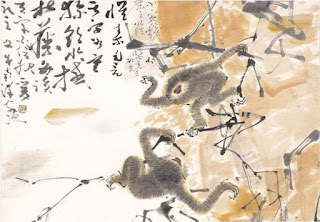
Cheong Soo Pieng (1917-1983) was another prominent Chinese-born Singaporean painter known for his abstract paintings. He along with Chen Wen Hsi, Georgette Chen and Liu Kang founded the Nanyang style of art, one of the most important movements of Singapore's cultural History. After migrating to Singapore in 1946, he took up Art teaching at the Nanyang Academy of Fine Arts, and began his fervent amalgamation of Western and Chinese pictorial styles. Best known for his stylized depictions of Malay and Balinese women, he worked in a unique aesthetic that blended Hindu, Chinese, and Modernist European influences.
Lim Tze Peng (born 1921) is a Singaporean painter known for his Chinese ink paintings. He is considered one of the most influential artists of his generation in Singapore. His masterpieces have been exhibited in many local and international exhibitions and prominent art centers in Singapore, including the Singapore Art Museum and Nanyang Academy of Fine Arts.. Hundred and two years old Mr Lim currently is the oldest living Artist of Singapore and was awarded the Cultural Medallion in 2003 for his vast contributions to the Art and Culture of the Country.

LIM TZE PENG (courtesy South China Morning Post)
Amanda Heng (born 1951): Amanda Heng is a contemporary artist known for performing art and installations. She often addresses issues of gender, identity, and social norms in her works and has exhibited her art internationally. She rose to pominance in the 1990's and is considered a pioneer of Performance Arts in Singapore. She is among the first Singaporean Artists to win the distinguished Benesse Prize and also awarded Cultural Medallion for Visual Arts in 2010. Among the many firsts that she brought to the Art scene in Singapore, includes the founding of the Artists Village in 1988 and then later in 1999 she formed the Women in The Arts (WITA) Collective, the first Artists run collective in Singapore.
Tan Swie Han (born 1943) Born in Indonesia Tan Swie Han is a Singaporean multi-disciplinary Artist who migrated from Indonesia in 1946 and is known for his Chinese calligraphy and Contemporary Art Sculptures. He is also distinguished as being the most expensive artist in Singapore after he sold his painting "Moon is Orbed" for S$3.7M in the year 2012 and later again broke his own record by selling his ink on rice-paper artwork "Bada Shanren" for S$4.4M.

Tan Swie Han (courtesy Straits Times)
Yeo Shih Yun (born 1976): Yeo Shih Yun is a Singaporean artist known for her abstract ink paintings. She combines traditional Chinese ink painting techniques with contemporary approaches, creating bold and expressive artworks reflecting her experiences and emotions.
Jane Lee (born 1963): Jane Lee is a contemporary artist known for her experimental approach to painting. She often uses unconventional materials such as epoxy paint and polyurethane foam to create textured and multi-dimensional artworks that challenge traditional notions of painting. Lee has toyed with the painting structure to create rich and tactile abstract works that frequently combine two into three dimensions.
These are just a few examples of the many talented artists from Singapore who have significantly contributed to the local and international art scene. The art scene in Singapore continues to evolve and grow, with new artists constantly emerging and pushing the boundaries of artistic expression. Head on to our curated collection Inspired-By-Singapore with a selection of works created by Artists worldwide that could illustrate different sides of Singapore's cultural diversity. Part of this collection is a selection of paintings by the Australian artist Dean O'Callaghan painted and inspired by Singapore's cityscapes and exclusively available on RtistiQ.
Explore our Curated Collections
SIMILAR ARTICLES
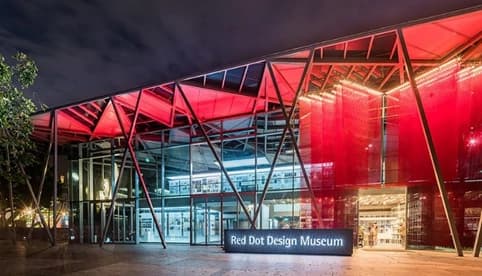
Exploring Art in Singapore
Today Singapore has emerged as one of the most happening artistic hubs attracting tourists and art lovers from across the world. The secret to this is in the nature of the burgeoning art scene in Singapore that encompasses a diverse range of artistic creations ranging from locally designed art to global contemporary art. Singapore's art scene continues to evolve and expand, making it an exciting destination for art lovers and a place where creativity and innovation thrive. Whether you're interested in traditional, contemporary, or street art, you're sure to find something that resonates with you in this dynamic city. Red Dot Museum To begin with, Singapore is reputed for its world class museums and galleries. Among this is the Red Dot Design Museum at Marina Bay which truly is in par with the trending world aesthetics. Designed as a glass building, it exhibits a great number of award-winning designs from over thirty countries. STPI Outside the confines of conventional fine art, there is Singapore Tyler Print Institute which has collaborated with established and emerging artist to create evocative pieces by experimenting in mediums of print and paper. STPI is an internationally well renowned creative workshop and art gallery in Singapore fostering a dynamic art hub. Interestingly, it blends engineering with art in a creative way. This can be seen for instance in Russel Qong’s ‘Lotus Dream’ which is a limited edition print made using mixed media, colour silk screen, lithography and gold leafing. Art and Science Museum Such confluence of art and science is also manifested in the Art and Science Museum at Marina Bay Sands. Futuristic in its approach, its exhibitions broaden the horizons of art and knowledge. For instance, one of its recent exhibitions, “Patricia Paccinini: We Are Connected” gives a fascinating exploration of what it means to be human in a world where biotechnology and genetic engineering is increasingly adopted. It makes one reflect on the ethical concerns around humankind’s abilities to create new life. When it was designed, its lotus flower-inspired architecture was intended to symbolize Singapore's transformation from a trading port known for its natural beauty into a global city focused on innovation and culture. However, the museum's most notable historical moment came in 2011 when it hosted "The Art of the Brick," a groundbreaking exhibition featuring the artwork of Nathan Sawaya entirely constructed from LEGO bricks. This display of creativity and engineering drew international attention and showcased the museum's commitment to blending art and science in unexpected and captivating ways, solidifying its reputation as a cutting-edge cultural institution. MINT Museum There are also museums that features quirky collections. The MINT Museum of Toy located on 26th Seah Street is Southeast Asia’s largest collection of rare and vintage toys spanning across different eras, cultures and themes. This stimulates a feeling of nostalgia as it features collections of old school toys based on famous characters like Astro boy, Popeye and Tintin. The MINT shop here retails replicas of vintage tin boys and traditional local games for one to take back as memorabilia. It was founded by Chang Yang Fa, a prominent businessman and toy collector. Chang's passion for collecting toys began in the 1980s when he started acquiring vintage toys and childhood memorabilia. Over the years, his collection grew significantly, and in 2007, he decided to share his treasures with the public by establishing the Mint Museum of Toys. What sets the Mint Museum apart is its exceptional collection of vintage toys and childhood artifacts spanning over a century, from the mid-19th century to the 1970s. The museum boasts an impressive array of more than 50,000 items, including rare and iconic toys, dolls, comics, and other collectibles from various countries. Visitors can explore the evolution of toys and childhood culture, providing a nostalgic journey through time. The Mint Museum of Toys not only showcases the historical significance of these artifacts but also celebrates their cultural and artistic value. It offers a unique opportunity to appreciate the craftsmanship and design of toys throughout history while reminiscing about one's own childhood memories. This one-of-a-kind museum in Singapore has become a beloved destination for toy enthusiasts, collectors, and anyone looking to experience the magic of nostalgia through the lens of play and creativity. Peranakan Museum There are also museums here dedicated to communities in Singapore that one could explore such as the Peranakan Museum. The Peranakan Museum in Singapore is a museum dedicated to the Peranakan culture, also known as the Straits Chinese or Baba-Nyonya culture, which is a unique hybrid culture that emerged from the intermarriage of Chinese immigrants and local Malays in the region. Officially opened in 2008 and is housed in a beautifully restored colonial-era building that was once the Tao Nan School, a Chinese-language school. The museum was established to showcase and celebrate the rich heritage and traditions of the Peranakan community in Southeast Asia. The museum specializes in preserving and presenting the artifacts, customs, and history of the Peranakan people, who played a significant role in the cultural mosaic of Singapore and the broader region. The museum houses an impressive collection of Peranakan artifacts, including traditional clothing, jewelry, ceramics, furniture, and religious objects. These items reflect the distinctive Peranakan aesthetics, which often feature intricate designs, vibrant colors, and a blend of Chinese and Malay influences. Visitors can engage with interactive exhibits that provide insights into Peranakan customs, rituals, and daily life. The museum offers a dynamic and immersive experience, allowing visitors to gain a deeper understanding of this unique culture. It frequently hosts cultural events, workshops, and performances, allowing visitors to participate in and appreciate the traditions, music, dance, and cuisine of the Peranakan community. The museum highlights the historical importance of the Peranakan culture in the development of Singapore and other Southeast Asian countries. It sheds light on how this distinct cultural group contributed to the region's diversity. Visit the Peranakan Museum website to learn more about recent and active events. Asian Civilization Museum Meanwhile, the multicultural heritage of Singapore is exhibited in the Asian Civilizations Museum housed in a historical building by the Singapore River. It holds artefacts from China, Southeast Asia, South Asia and West Asia all thematically organised. This shows the true essence of Singaporean civilization that has emerged over the past with the flow of people, ideas, belief systems and artistic traditions. Art Precincts Apart from Museums promoting Art and Culture of South-east Asia and Singapore, there are specific neighbourhoods with concentration of art galleries, studios, cultural institutions, and creative spaces. These precincts are known for their vibrant art scenes, making them ideal destinations for art enthusiasts and cultural explorers. The National Heritage Board of Singapore has been greatly responsible for managing these art precincts and spreading art and culture uniquely to each neightbourhood, thus telling the Story of Singapore, sharing the Singaporean experience and imparting Singapore spirit amongst the locals. Some of the most prominent Art precinct include Gillman Barracks: Located in the Bukit Timah area, Gillman Barracks is one of Singapore's most well-known art precincts. It's home to a cluster of contemporary art galleries, including both local and international names. The galleries often host exhibitions featuring a wide range of visual arts, from painting and sculpture to photography and new media. Bras Basah.Bugis: This historic district in the heart of Singapore is a cultural hub with a rich artistic heritage. It houses several museums, including the Singapore Art Museum and the National Museum of Singapore. You can explore traditional and contemporary art here, and the precinct also hosts art events and festivals. Tiong Bahru: While primarily known for its charming cafes and heritage architecture, Tiong Bahru has also seen an emergence of street art and murals in recent years. Exploring this neighborhood can lead you to various art installations adorning its streets and buildings. Haji Lane: Situated in the Kampong Glam area, Haji Lane is famous for its colorful and eclectic street art. This trendy street is lined with boutique shops, restaurants, and bars, making it a great place to soak up the artistic atmosphere while enjoying some shopping and dining. Little India: Known for its vibrant Indian culture, Little India also features a growing street art scene. The area hosts an annual "Aliwal Urban Art Festival," which showcases street art and live performances by local and international artists. Art in Singapore also lives in the wealth of street art and iconic wall murals. Tiong Bahru is one such hip places to explore in downtown Singapore. Here, one is greeted by the elaborate painted murals created by the upcoming contemporary artist Yip Yew Chong. His ‘Bird Singing Corner’ memorialises the old ‘Bird Corner’ where residents would bring their caged birds to hear them sing whilst admiring their prized avian pets. Bird Singing Corner by Yip Yew Chong Also popular among tourists is the wall art in China town at Banda street which pours out Singapore’s Chinese heritage through its mural paintings. This includes paintings ranging from fishermen and labourers to Samsui women who were female migrants from Sanshui district of china known for their iconic red headscarves. Here, the Singaporean Artist, Belinda Low’s pictorial depiction of Singapore from past and present is most encapsulating. One can also see several nostalgic paintings by YYC such as his most recent work, ‘Dreams of Chinatown’ (2021) which showcases some of the nostalgic sights of businesses in Chinatown back then. The list is endless. The Hindoo road in little India has a wall dedicated to the iconic Tamil film star, Rajnikanth painted by Muhamed Zukaernaean inspired by the former’s rags to riches stories. These art precincts in Singapore offer diverse experiences for art lovers, from exploring contemporary art galleries to discovering street art in unexpected places. Each area has its own unique charm and artistic identity, contributing to Singapore's vibrant cultural landscape.

All About Graffiti Art and Art Brut
In the urban landscape, vibrant forms of artistic expression emerge, challenging conventional notions of art and engaging with communities in unconventional ways. Two distinctive art forms that have garnered attention for their rawness and unfiltered creativity are graffiti art and Art Brut. Some of the most notorious names of contemporary art come from the world of graffiti. And while formal training and historic institutions still hold a massive presence in the art world, we are seeing more and more outsiders storm the gates and break through to become major names. That’s why we put together this guide to understand the types of graffiti art and art brut better. With this new knowledge, you’ll be able to better appreciate this diverse and dynamic realm of creative expression. What is Graffiti Art? Graffiti is a kind of art brut. It is any drawing or writing made on a surface, typically in public view. Graffiti itself is about as old as humanity. But beginning in the 1980s, graffiti began to be shown in fine art institutions, like galleries and museums. With the inclusion of many major graffiti artists into the formal art world, the lines have become more and more blurred. Graffiti art now refers to a thriving genre of art that uses the styles and techniques of street graffiti, but with finished products that are meant for more traditional art spaces. Some of the most well known artists of the last fifty years are graffiti artists, including the late Jean-Michel Basquiat. What’s the difference between graffiti and street art? The terms "graffiti" and "street art" are often used interchangeably, but they do have distinct characteristics that set them apart: Graffiti artists, like the famous Banksy, create and present their art in public spaces. Frequently, their art is not sanctioned by the owners of the property that the art is painted on. For this reason, graffiti art typically are revolutionary or otherwise transgressive themes. While graffiti can be seen as a subset of street art, the key difference lies in the legality and intent behind the creations. Graffiti is often associated with unauthorized markings and can be viewed as an act of rebellion or vandalism, whereas street art is generally more accepted and embraced by communities as a form of public art. However, it's worth noting that the line between graffiti and street art can be blurred, and there are artists who bridge both realms, incorporating elements of graffiti within their street art pieces. Ultimately, both graffiti and street art play vital roles in shaping the visual landscape of cities, sparking conversations, and challenging societal norms through artistic expression in public spaces. If you are still confused, see this helpful guide: Graffiti art is often associated with illicit, unauthorized markings made on public spaces using various tools like spray paint, markers, or etching tools. Historically, graffiti has been associated with acts of vandalism and considered a form of public defacement. Street art, on the other hand, encompasses a broader range of artistic expressions in public spaces. Street artists often create their works with the permission of property owners or as part of organized initiatives to beautify urban environments. Street art is typically more intricate, visually elaborate, and conceptually driven compared to traditional graffiti. How Graffiti Art Started Graffiti art began as street art, and people often use the words graffiti and street art interchangeably. But a few New York City gallerists in the 1980s saw graffiti as a blooming world of creative expression. And soon, they were exhibiting the work of graffiti artists. A particular hotbed was the East Village in Manhattan. Fun Gallery and Now Gallery helped lead the way in presenting graffiti art in a new light. By placing the work by these outsider artists in the context of a gallery, audiences began to appreciate the art on a deeper level. Artists like Keith Haring, Crash, Lady Pink, and Jean-Michel Basquiat became major names in the art world. They inspired new generations of graffiti artists to pursue the style — as street art, gallery exhibits, or both. Today, major corporations have hired graffiti artists to promote products . Major auction houses sell graffiti art. And you can buy graffiti art at countless galleries around the world. Famous Graffiti Paintings Curious to see some great graffiti art? We’ve put together a few of the most impressive and noteworthy examples. Untitled Skull (1982) by Jean-Michel Basquiat Copyright Jean-Michel Basquiat This painting is legendary not only as part of Basquiat’s skull series, but also because of the major headlines it made in 2017. It was that year that Sotheby’s New York sold it for a staggering $110.5 million dollars, blowing past its $57 million estimate. Ignorance = Fear (1989) by Keith Haring Copyright Keith Haring Foundation This work epitomized Haring’s use of art as a tool to raise political consciousness. As a gay activist, the AIDS epidemic was central to much of Haring’s work in the 1980s. This painting united his powerful pop and graffiti hybrid style to deliver an important message. The Breakdown Comes (1983) by Lady Pink Copyright Lady Pink This masterpiece of graffiti art by Lady Pink reveals the deep anxieties of the middle class in 1980s New York City as an empowering fantasy of the downtrodden in the same time and place. The vitality and playfulness of the artwork helps the complex themes go down enjoyably. Graffiti art is such an exciting realm of the art world. Now a few generations into its acceptance into the establishment, it still continues to push boundaries and grab our attention. Now that you know a little more about it, you can shop graffiti art from this fascinating genre that RtistiQ has put together for you to explore. What is Art Brut? Art brut is a term coined by French artist Jean Dubuffet in the 1940s, literally meaning raw art. Dubuffet used the term to describe the realm of artwork made outside of the formal and academic art world. Sometimes called outsider art, artbrut contains a broad spectrum of work. The term is often used with a bias toward Western art circles. For instance, artists in hunter gatherer tribes might be highly trained and create pieces inside a well codified tradition, but their work might still be considered art brut to some critics—so a reader has to consider who is using the term and how. Art Brut artists typically have no formal artistic training and often face societal marginalization or live with mental health challenges. Their works are characterized by their authenticity, unconventionality, and a lack of adherence to traditional artistic norms. Art Brut encompasses a wide range of styles and techniques. Artists often work with unconventional materials and mediums, using found objects, discarded materials, or natural elements. Their creations are deeply personal and reflect their individual experiences, inner worlds, and unique perspectives. Art Brut has provided a platform for artists who have been marginalized or overlooked by the art establishment. Figures such as Adolf Wölfli, Henry Darger, and Martín Ramírez have gained recognition posthumously for their extraordinary bodies of work. Art Brut challenges the boundaries of what is considered "art" and questions the prevailing criteria for artistic validation. Famous Art Brut Paintings Many Art Brut artists remain relatively unknown, with their works often discovered posthumously. However, there are a few notable Art Brut paintings that have gained recognition and influenced the art world. Here are a few examples: Adolf Wölfli's crazy controversial Art: Adolf Wölfli, a Swiss artist and psychiatric patient, produced an extensive body of work during his confinement. His intricate and highly detailed drawings depict fantastical landscapes, intricate patterns, and narratives from his own imaginary world. Prisoner Drawings is a series of densely packed compositions that reveal Wölfli's creative vision and psychological complexity. "Götter [gods]" by August Walla: August Walla, an Austrian artist with schizophrenia, created a range of powerful and expressive artworks. "Mystery Train" by Martín Ramírez: Martín Ramírez, a Mexican-American artist, created intricate drawings while institutionalized in psychiatric hospitals. His works often feature repetitive lines and motifs, including trains, figures, and animals. Conclusion: Graffiti art and Art Brut are two distinct forms of artistic expression that have captivated audiences with their rawness, authenticity, and unconventional approaches. Graffiti art, born from underground subcultures, challenges social norms and transforms the urban landscape into a vibrant visual tapestry. Art Brut, created by self-taught artists, provides a platform for marginalized voices and challenges established artistic conventions. Together, these art forms exemplify the power of artistic expression to transcend boundaries, spark dialogue, and redefine the notion of what art can be in our complex and diverse world. Check out the Graffiti and Art Brut Collection on RtistiQ to explore some of magnificent works in recent times.
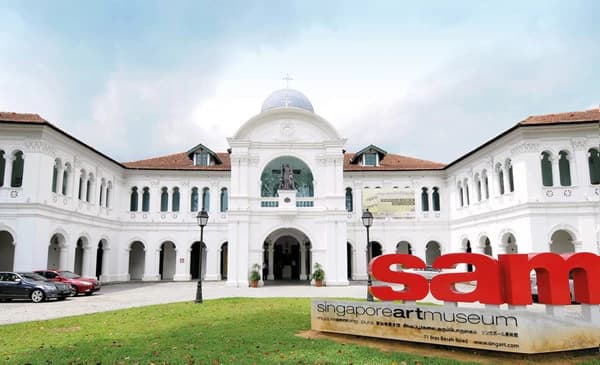
SINGAPORE AND ITS BOOMING ART SCENE
Over the recent years, the growing art scene in Singapore has gathered much attention across the globe. Singapore has bloomed from just being an important financial hub to also a center of art and culture. For anyone looking to explore this booming art scene in Singapore, the various art museums and galleries in the island is just the right place to visit. The Singapore Art Museum (SAM) Location - 39 Keppel Rd, #01-02 Tanjong Pagar Distripark, Singapore 089065 Entirely dedicated to contemporary art, the Singapore Art Museum holds an exquisite collection of artistic works by some of the best local southeast and East Asian artists. While creating a lively art experience for all, it has also organized a variety of exciting art events such as the Singapore Biennale and the Singapore Art Week which also included live art performances, art tours, workshops, etc. It has opened up multiple venues for exhibiting art. Apart from the two heritage buildings, the former St. Joseph’s Institution and the former Catholic Street, the most recent addition is the one in Tanjong Pagar Distripark. The National Gallery Singapore Location – 1 St Andrew's Rd, Singapore 178957 The largest museum of Singaporean and Southeast Asian modern Art, it is sheltered in the two iconic Singapore buildings – the Supreme court building and the City hall. These two monuments are itself great works of art built during the colonial times in Singapore. Today, it is home to some of the best collection of modern Singapore and southeast Asian art including the works of prominent local artists like Georgette Chen, Che Chong Swee and Liu Kang as well as by leading artists from both southeast Asia and the rest of the globe such as Raden Saleh from Indonesia and Latiff Mohidin from Malaysia. The exhibitions in many ways expresses the essence of Singaporean art and heritage. There is also the Keppel Centre for Art Education here which is Singapore’s first foremost art education center that fosters an environment of learning and exploration for youths, children and families. The Art House Location – 1 Old Parliament Ln, Singapore 179429 The art house was first established as the Old Parliament House Limited but it was later was renamed as the Arts House Limited on 19 March 2014. It strives to build up a rich community life by connecting through the diverse artistic productions in Singapore. It hosts art activities and exhibitions on a regular basis facilitating interactions among artists and lovers of art. Gillman Barracks Location – 9 Lock Rd, Singapore 108937 While Gillman Barracks today constitutes a space dedicated to creative art, originally, it was a building constructed in 1936 as army barracks for the British’s 1st Battalion. It was named after General Sir Webb Gillman. In 2012, it was transformed into a space for housing some of the leading art galleries while retaining the main colonial architectural designs. This includes the ShanghART Singapore and Sundaram Tagore Gallery. Today, it exhibits a wide array of top contemporary art from different parts of the globe. Within the same structure is the NTU Centre for Contemporary Art (CCA) Singapore which is a research center that encourages experimentation with contemporary art. Goodman Arts Centre Location – 90 Goodman Rd, Singapore 439053 Established in 2011, the Goodman Arts Centre aims to build a lively space for art lovers to interact and experience different art forms such as fine art, dance, theatre and poetry. It is known for organizing some of the most thought provoking and exciting workshops and performances that reaches out to a diverse audience. Ranging from ceramic arts to cultural dance, there is something for everyone in Goodman Arts Centre. Collectors Contemporary Location – Petro Centre, 5 Jalan Kilang Barat, Singapore Collectors Contemporary brings to the fore innovative artistic productions from across the globe in a single platform; also providing an opportunity for art lovers to own some of these contemporary art works. Its selection of exhibits encompasses extraordinary modern and contemporary artwork of high quality. Famous for housing the largest collection of artworks by the famous icon, Andy Warhol, it also regularly arranges educational events and programs for art students with professional artists thereby creating a space of learning. NUS Museum Location – University Cultural Centre, Singapore Unlike other art museums, the NUS museum is actually a university museum set up to encourage cultural artistic life within the university. To enrich the learning experience, it organizes exhibitions, workshops, film screenings and public programs which is carefully curated. It consists of nine galleries which are mostly focused on presenting Southeast Asian art and culture. This includes four permanent collections – the south and Southeast Asian Collection, the Lee Kong Chian Collection, the Ng Eng Teng Collection and the Straits Chinese Collection. The Parkview Museum Location - L3, Parkview Square 600 North Bridge Road, Singapore The main highlight of the Parkview Museum established by the Parkview Group is Italian contemporary art and is famous for holding the largest Salvador Dali collection outside Spain. It however also figures as an important space that encourages the growth of the local art scene. This organizes solo shows and theme-based exhibitions mostly focused on architectural design and traditional art and culture.
ARTICLES ON ART INSIGHT

ART INSIGHT
How to Tell a Lithograph from a Painting: A Comprehensive Guide
Art enthusiasts and collectors often come across various forms of visual art, including lithographs and paintings. While both mediums have their own unique appeal, it is important to understand the differences between them. This article aims to provide a comprehensive guide on how to differentiate between a lithograph and a painting, considering their techniques, materials, and characteristics. By gaining insights into these key factors, you'll be equipped with the knowledge to identify and appreciate these art forms more effectively. Understanding Lithographs A lithograph is a type of printmaking technique that involves the process of drawing or painting on a stone or metal plate. It is based on the principle of oil and water repelling each other. The artist creates an image on the stone using specialized tools, and then applies ink to the stone's surface. The ink adheres to the image while being repelled by the wet areas, and a piece of paper is pressed onto the plate to transfer the image. A more detailed article on Lithographs can be referenced in the article What Is A Lithograph. Analyzing Painting Techniques Painting, on the other hand, involves the application of pigments onto a surface, typically canvas, using various tools like brushes, knives, or even fingers. Paintings can be created with different types of paints, such as oil, acrylic, watercolor, or gouache. Artists have greater freedom to manipulate the paint, creating textures, layering colors, and incorporating various brushstrokes, thereby resulting in a unique and original piece of artwork. There are a few key differences between lithographs and paintings that can help you tell them apart. Paper: Lithographs are typically printed on high-quality paper, such as rag paper or watercolor paper. Paintings, on the other hand, can be painted on any type of paper, including newsprint, canvas, or wood. Ink: Lithographs are printed with ink that is specifically designed for lithography. This ink is water-based and has a high viscosity, which means that it is thick and does not flow easily. Paintings, on the other hand, can be painted with any type of paint, including oil paint, acrylic paint, or watercolor paint. Printing process: Lithographs are printed using a process called intaglio printing. This process involves pressing the plate against the paper in a very controlled manner. Paintings, on the other hand, are painted by hand, and there is no such control over the application of paint. Texture: Lithographs typically have a smooth, even texture. Paintings, on the other hand, can have a variety of textures, depending on the type of paint and brushstrokes used. Signature: Lithographs are typically signed by the artist. Paintings, on the other hand, are not always signed. Examining the Surface One of the key ways to differentiate between a lithograph and a painting is by examining the surface closely. Lithographs typically have a flat, smooth texture with even ink distribution. Due to the nature of the printing process, the lines and colors in lithographs tend to be more uniform and consistent. In contrast, paintings often exhibit varied textures, visible brushstrokes, and an overall three-dimensional quality. The presence of texture is a strong indicator of an original painting. Inspecting the Signature Another important aspect to consider is the presence of an artist's signature. In most cases, lithographs are signed in pencil, usually at the bottom margin, while paintings are typically signed in paint directly on the artwork itself. Examining the signature can provide valuable insights into the authenticity and origin of the piece. Additionally, lithographs may have edition numbers or impressions indicating the total number of prints made from the original plate. Assessing the Color Saturation Color saturation is another distinguishing factor between lithographs and paintings. Lithographs tend to have more consistent color saturation throughout the print, with an absence of subtle variations that are commonly seen in paintings. Paintings, on the other hand, often exhibit subtle color shifts, gradients, and nuanced tonal variations, showcasing the artist's hand in mixing and applying the pigments. Considering the Frame and Glass The framing and glass used can also provide clues about whether you're looking at a lithograph or a painting. Paintings are usually framed with a mat and glass, which helps protect the artwork and enhance its presentation. In contrast, lithographs are typically framed without glass, as the glass can cause unwanted reflections and interfere with viewing the image. Moreover, lithographs are often mounted directly on the backing board to prevent any damage caused by the pressure of the glass. Conclusion Distinguishing between a lithograph and a painting requires a keen eye and understanding of the key differences in technique, materials, and characteristics. By examining the surface, signature, color saturation, and framing, you can confidently identify whether you are looking at a painting or a Lithograph.
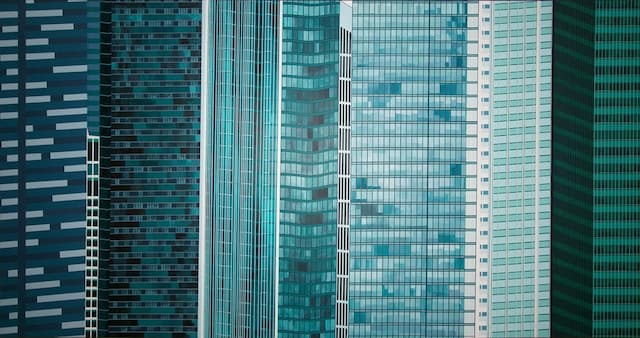
ART INSIGHT
Singapore Art and Artists: Exploring the Rich Cultural Tapestry and Creative Expression
Singapore is a vibrant city-state that has a thriving arts and culture scene. Over the years, Singapore has seen the emergence of numerous talented artists who have made significant contributions to the local and international art scene. In recent years, the art scene in Singapore has experienced significant growth and development, further solidifying its position as a vibrant cultural hub. Here's a glimpse into Singapore's art and artists: Art Movements in Singapore: Compared to European and other Asian counterparts, Art is relatively young in Singapore and driven mainly by the many cultures and traditions that make up Singapore society. What makes Singaporean Art more distinct is the merging of Chinese, Malay and European Art forms with a blend of localised cultural heritage, indigenous beliefs and popular practices in Singapore. Here is an overview of the key periods and milestones in the history of visual art in Singapore: Early Art Influences (Pre-19th Century): Before the 19th century, Singapore was primarily a trading port, and the cultures of the Malay Archipelago, China, India, and the West predominantly influenced art. Traditional art forms, such as batik, sculpture, and calligraphy, were practised by local artisans. Colonial Influence (19th-early 20th century): The arrival of British colonial rule in the 19th century brought Western influences to Singapore. European artists and art teachers introduced academic art practices, such as oil painting and portraiture, to local students. Notable artists during this period include Raffles Institution founder Sir Thomas Stamford Raffles and his wife, Sophia Raffles. Nanyang Style and Cultural Identity (mid-20th century): In the 1950s, a significant art movement known as the Nanyang Style emerged in Singapore. Led by four master artists of the time, Liu Kang, Chen Wen Hsi, Georgette Chen and Cheong Soo Pieng, this movement combined Chinese ink painting techniques with Western art styles, creating a distinctive fusion. The Nanyang Style was a form of cultural expression exploring the identity of the Southeast Asian region and its people. Modern Art Society (mid-20th century): In the 1960s, the Modern Art Society was established, advocating for modern art practices and promoting local artists. This period marked a shift towards experimentation and exploring abstract and conceptual art forms. Artists like Lim Yew Kuan and Anthony Poon were instrumental in driving the development of modern art in Singapore. Contemporary Art and Global Recognition (late 20th century-present): In the late 20th century, Singapore's art scene continued to evolve and embrace contemporary art practices. The opening of institutions like the Singapore Art Museum (SAM) in 1996 and the National Gallery Singapore in 2015 provided platforms for local and international contemporary artists. Singapore's participation in international art events, such as the Venice Biennale and the Singapore Biennale, further propelled its global recognition. Most Notable Artists of Singapore Singapore has been home to many prominent Artists continuously gaining International reputations. Here are some of the most notable and significant artists from the city-state of Singapore Georgette Chen (1906-1993) was a Chinese-born Singaporean painter known for her realistic portraits and landscapes. She is considered one of the pioneers of modern art in Singapore and a key figure of the "Nanyang School" of Art. She had spent much of her early life in China, France and New York, before making Singapore her home in the year 1954 to spend later years of her life. GEORGETTE CHEN, BOATS AND SHOPHOUSES , (credit: Sotheby's) Chen Wen Hsi (1906-1991) was a Chinese-born Singaporean painter known for his lyrical landscapes and portraits. Similar to other prominent artists Chen Wen Hsi, had spent a good part of his life in China before making Singapore his permanent home. He along with four other prominent artists founded the Nanyang Style of Painting in the year 1953, creating a watershed moment for the Singapore Art scene. In 1964 he was awarded with the "Public Service Star" award. One of his paintings "Two Gibbons Amidst Vines", addorns the back of every $50 note of Singapore. The gibbons are there not only to beautify the note but they also signify a great artist who contributed his entire whole life to the art world. Cheong Soo Pieng (1917-1983) was another prominent Chinese-born Singaporean painter known for his abstract paintings. He along with Chen Wen Hsi, Georgette Chen and Liu Kang founded the Nanyang style of art, one of the most important movements of Singapore's cultural History. After migrating to Singapore in 1946, he took up Art teaching at the Nanyang Academy of Fine Arts, and began his fervent amalgamation of Western and Chinese pictorial styles. Best known for his stylized depictions of Malay and Balinese women, he worked in a unique aesthetic that blended Hindu, Chinese, and Modernist European influences. Lim Tze Peng (born 1921) is a Singaporean painter known for his Chinese ink paintings. He is considered one of the most influential artists of his generation in Singapore. His masterpieces have been exhibited in many local and international exhibitions and prominent art centers in Singapore, including the Singapore Art Museum and Nanyang Academy of Fine Arts.. Hundred and two years old Mr Lim currently is the oldest living Artist of Singapore and was awarded the Cultural Medallion in 2003 for his vast contributions to the Art and Culture of the Country. LIM TZE PENG (courtesy South China Morning Post) Amanda Heng (born 1951): Amanda Heng is a contemporary artist known for performing art and installations. She often addresses issues of gender, identity, and social norms in her works and has exhibited her art internationally. She rose to pominance in the 1990's and is considered a pioneer of Performance Arts in Singapore. She is among the first Singaporean Artists to win the distinguished Benesse Prize and also awarded Cultural Medallion for Visual Arts in 2010. Among the many firsts that she brought to the Art scene in Singapore, includes the founding of the Artists Village in 1988 and then later in 1999 she formed the Women in The Arts (WITA) Collective, the first Artists run collective in Singapore. Tan Swie Han (born 1943) Born in Indonesia Tan Swie Han is a Singaporean multi-disciplinary Artist who migrated from Indonesia in 1946 and is known for his Chinese calligraphy and Contemporary Art Sculptures. He is also distinguished as being the most expensive artist in Singapore after he sold his painting "Moon is Orbed" for S$3.7M in the year 2012 and later again broke his own record by selling his ink on rice-paper artwork "Bada Shanren" for S$4.4M. Tan Swie Han (courtesy Straits Times) Yeo Shih Yun (born 1976): Yeo Shih Yun is a Singaporean artist known for her abstract ink paintings. She combines traditional Chinese ink painting techniques with contemporary approaches, creating bold and expressive artworks reflecting her experiences and emotions. Jane Lee (born 1963): Jane Lee is a contemporary artist known for her experimental approach to painting. She often uses unconventional materials such as epoxy paint and polyurethane foam to create textured and multi-dimensional artworks that challenge traditional notions of painting. Lee has toyed with the painting structure to create rich and tactile abstract works that frequently combine two into three dimensions. These are just a few examples of the many talented artists from Singapore who have significantly contributed to the local and international art scene. The art scene in Singapore continues to evolve and grow, with new artists constantly emerging and pushing the boundaries of artistic expression. Head on to our curated collection Inspired-By-Singapore with a selection of works created by Artists worldwide that could illustrate different sides of Singapore's cultural diversity. Part of this collection is a selection of paintings by the Australian artist Dean O'Callaghan painted and inspired by Singapore's cityscapes and exclusively available on RtistiQ.

ART INSIGHT
Exploring the Intricate Techniques of Islamic Art
Islamic art is a rich and diverse artistic expression shaped by centuries of cultural and religious influences. From calligraphy to geometric patterns, this guide explores Islamic art's various styles and techniques and how they have evolved over time. What are Islamic Art styles and techniques in the contemporary art market? Islamic Art encompasses various styles and techniques, some of which have been adapted and incorporated into contemporary art markets. Here are some examples: Calligraphy: Islamic calligraphy is one of the most recognisable art forms in the world. It involves the writing of Quranic verses or other Islamic phrases in a decorative way. Contemporary artists have experimented with this style by incorporating it into paintings, sculptures, and installations. Calligraphy is also used to decorate buildings, textiles, and other objects, and is often combined with other forms of Islamic art, such as geometric patterns and floral motifs. The beauty of calligraphy lies in its ability to convey meaning and emotion through the careful arrangement of letters and words. Geometric patterns: Geometric patterns are common in Islamic Art and are often used to decorate mosques and other religious buildings. Contemporary artists have also incorporated these patterns into their work, creating modern pieces rooted in Islamic tradition. Some common geometric shapes used in Islamic art include circles, squares, triangles, and stars. These shapes are often combined to create intricate and mesmerizing patterns that are both beautiful and meaningful. Miniature painting: Miniature painting is a traditional Islamic art form that involves creating small, detailed paintings on paper or other surfaces. Contemporary artists have continued to use this technique, often with a modern twist, creating works that are both intricate and innovative. Metalwork: Islamic metalwork is known for its intricate designs and detailed craftsmanship. Contemporary artists have continued to use metalworking techniques to create modern pieces that are both functional and aesthetically pleasing. Ceramics: Islamic ceramics are often decorated with intricate patterns and designs. Contemporary artists have continued to use this technique, creating modern ceramics that are both beautiful and functional. Islamic art styles and techniques have a rich history that inspires contemporary artists worldwide. By blending traditional Islamic techniques with modern styles and materials, these artists are creating a new and exciting form of Art that celebrates both the past and present. The influence of nature and floral motifs Nature and floral motifs are also commonly found in Islamic art. These motifs are often used to symbolize growth, renewal, and the beauty of the natural world. Islamic artists often use stylized versions of flowers, leaves, and vines in their designs, incorporating them into geometric patterns or using them as standalone elements. The use of nature and floral motifs in Islamic art reflects the importance of nature in Islamic culture and the belief in the interconnectedness of all living things. Working across various disciplines, Mobeen Akhtar details her fondness for arabesque by using natural pigments extracted from minerals, rocks and earth as she aims to practise the traditional methods so they may be recognised and enjoyed today, as they were in the past. The role of color and symmetry in Islamic art Color and symmetry are two important elements in Islamic art. The use of vibrant colors, such as blues, greens, and reds, is common in Islamic art and is often used to create a sense of harmony and balance. Symmetry is also a key feature of Islamic art, with many designs featuring intricate geometric patterns that are perfectly balanced on both sides. This symmetry is believed to reflect the order and balance found in the natural world and is a reflection of the Islamic belief in the unity and harmony of all things. Is Islamic Art a religious-only Art? Islamic Art is not solely religious but strongly connects to the Islamic faith and culture. Islamic Art encompasses various artistic forms and styles, including calligraphy, geometric patterns, miniatures, textiles, ceramics, metalwork, and architecture. Multiple cultures and regions have influenced these art forms throughout Islamic history and have been used for religious and secular purposes. Islamic Art can be found in various settings, from religious spaces like mosques and madrasas to secular areas like homes, palaces, and public buildings. In addition, Islamic Art has been appreciated and collected by people of various faiths and cultures throughout history. While Islamic Art often incorporates Islamic themes and motifs, it is not limited to religious subjects. Many Islamic artists throughout history have drawn inspiration from the natural world, human figures, and other non-religious subjects. In contemporary Art, Islamic art styles and techniques continue to inspire artists of all backgrounds and beliefs. By blending traditional Islamic techniques with modern styles and materials, these artists are creating a new and exciting form of Art that celebrates both the past and present. Is Islamic Art only practised by Muslims? Islamic Art has its roots in the Islamic faith and culture, but it is not limited to only Muslims. Islamic Art encompasses various artistic forms and styles, including calligraphy, geometric patterns, miniatures, textiles, ceramics, metalwork, and architecture. Multiple cultures and regions have influenced these art forms throughout Islamic history, and they have been appreciated and practised by people of different faiths and backgrounds. Many non-Muslim artists and artisans have contributed to the development of Islamic Art throughout history. In medieval Spain, for instance, Christian and Jewish artists worked alongside Muslim artisans to create some of the most stunning examples of Islamic Art and architecture. And in modern times, many contemporary artists and designers from diverse backgrounds have been inspired by Islamic Art and its techniques, incorporating them into their works. Furthermore, many Islamic art forms have been used for religious and secular purposes. Islamic architecture, for example, is often used for public buildings and private homes, regardless of the faith or background of the owner. Similarly, Islamic calligraphy and geometric patterns are often used in various artistic and decorative contexts, from book design to interior decoration. Final Thoughts! In conclusion, Islamic art is a form of art that is enjoyed by people of all backgrounds, cultures, and faiths. Its beauty and significance can be appreciated by anyone with an appreciation for art and culture. Head on to a very special collection of Islamic Art from Artists across different part of the world on RtistiQ - Cultural festivity Art Collection

